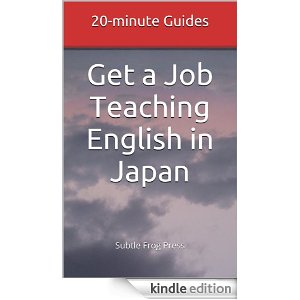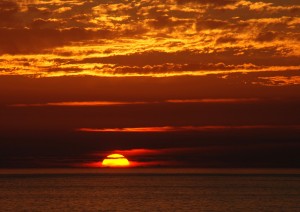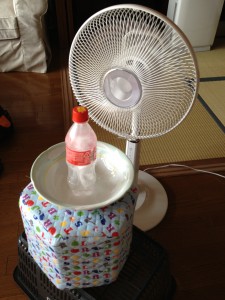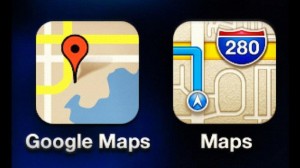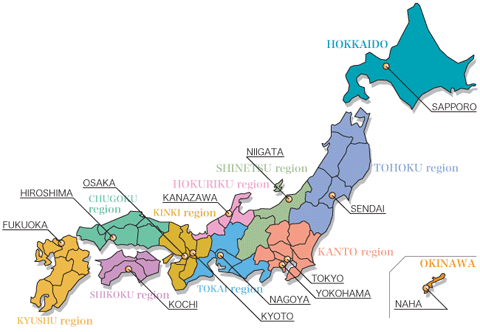Get a Job Teaching English in Japan
My second ebook, Get a Job Teaching English in Japan, is free on Amazon Kindle for the next couple of days. It’s aimed at people new to Japan, but I would be really grateful if you would grab a copy and leave an honest review on Amazon. The book is available in all the Kindle stores and you should be able to find it with a simple search.
If you have any comments about the content, please let me know! One of the nice things about Kindle is that you can fix mistakes after ‘printing’.
Thanks for all your support.
blogging earthquake expectations life in Japan living in Japan personal refugee
by sendaiben
leave a comment
Shock Therapy: how a geological event helped cement my minimalist leanings
This post was originally written for an ebook project that never happened. I’m happy to publish it here now.
Are you a wannabe minimalist? I was. It took a major natural disaster to change that.
I became interested in a minimalist lifestyle a couple of years ago. It started with Leo Babauta and Zen Habits, and progressed to Karol, Tynan, Baker, and others. It was appealing, and I spent hours reading articles, following blogs, looking at lists of possessions and checking out minimalist workspaces.
I didn’t actually do anything to change my life, but it was fun thinking about it.
I guess I had the desire but not the drive, the talk but not the walk. I suspect this may be very common, with a small core of people actually living a minimalist lifestyle, and a wider circle of spectators seeing the benefit but not taking action.
This all changed in March 2011. I was just getting ready to teach on an ordinary Friday afternoon when the fourth largest earthquake in recorded history hit the city I live in, doing substantial damage in itself and causing a devastating tsunami. Luckily my seven year-old students hadn’t arrived at the classroom yet, so I didn’t have to worry about them being hurt when everything in the room flew five feet sideways, including computers, tables, and bookshelves.
The earthquake lasted for about five minutes, which is about four and a half minutes too long for comfort. We’re used to earthquakes here, but they normally only last a few seconds. This one started, then got stronger and stronger, and everything just kept violently shaking for what seemed like forever.
After it finally stopped, I left the classroom and checked on some of our neighbors, then stood in a nearby park with other members of the community, all of us shocked into silence.
That evening I sat with my family in our large rental house by candlelight, surrounded by electrical appliances that no longer worked, huddling together for warmth under all our blankets and quilts.
The next day we foraged for food. Going through my daughter’s apartment, taking only food and water and leaving CDs, magazines, clothes, TVs, and furniture behind really made an impression on me. Likewise when we found all the shops closed and shuttered. Gas stations, chained up. Didn’t matter how good your credit was, how much money you had in your wallet.
We’re all just a couple of hours away from that.
That night, back at home taking stock, we received a couple of phone calls from friends and family abroad (I have no idea how they got through as the phone network was down) warning us about the unfolding nuclear accident in Fukushima. We live just under 100km away.
I made a quick decision based on a decision matrix taking into account what would happen under each of four scenarios: there were two variables, whether the accident was serious or not, and whether we left or not. The outcomes were, in turn:
1. the accident was not serious, and we stayed put: nothing happens
2. the accident was not serious, and we ran away: somewhat embarrassing and would cost some money
3. the accident was serious, and we stayed put: irradiation and mass panic when people realised what was happening
4. the accident was serious, and we ran away: safety and some monetary expense
There wasn’t much contest. I persuaded my family, we packed our cars, and we set off a couple of hours later, driving through the night and most of the next day until we got to relative safety in western Japan, several hundred kilometers and a mountain range away from the danger zone.
I locked our house and walked away from everything I owned that didn’t fit into a small bag. We got into the car and left forever as far as we knew.
And you know what? I didn’t care about any of it. For the four weeks we spent with relatives in Kanazawa, on the western coast of Japan, not once did I think of an actual thing we had left behind. Family? We took everyone with us. Friends? Yes. Students? Yes. Our stuff? Not once.
Not one piece of clothing, not one gadget, not one room of the (too) large house we rented.
And that’s when I became a real minimalist.
Just over two years after the event that changed everything, we are living in a small apartment (our rental house was structurally damaged and had to be knocked down), I haven’t bought anything physical for months (sadly, ebooks and music still draw my eye occasionally -I am not yet a digital minimalist), and I am consciously reducing the things I have left.
The next time we have to leave in the middle of the night, I’m hoping to be able to take everything with me.
life in Japan living in Japan materials personal technology
by sendaiben
2 comments
Summer tip: use a fan and ice instead of air conditioning
This post is dedicated to my friend Philip, ’cause he needs it right now 😉
This summer has been fairly mild in Sendai, but the last couple of weeks have been hotter. I don’t like air conditioning and prefer to use a combination of other strategies to stay cool outside of work. At home I wear as little as possible, sleep on bamboo sheets (one of the greatest inventions ever), and use an electric fan.
One way to make an electric fan more effective is to combine it with ice. This has two benefits: it takes some of the moisture out of the air through condensation and also lowers the temperature of the air slightly. You can see my setup in the picture above. A plastic bottle 2/3 full of water, frozen, a bowl to catch the condensation (this bottle accumulates a couple of centimeters of water in the bowl by the time it thaws out completely), and something to raise the bowl so that it is in front of the fan.
If you prepare three or four bottles you can rotate them fairly constantly and maintain a more pleasant environment without the expense, environmental damage, and air quality degradation of air conditioning.
Any other tips for the summer?
apple google iPhone life in Japan living in Japan personal technology
by sendaiben
leave a comment
Google Maps App for iPhone
Another tangent, I’m afraid. If you don’t have an iPhone you can probably stop reading now. If you have an iPhone that is running iOS 5 or less, this may be of interest. But if you have an iPhone running iOS 6 and you haven’t downloaded the Google Maps App yet, keep reading.
I’ve been playing with the new Google Maps App on my iPhone 4S for a couple of weeks now. The short version is that it is amazing.
(it’s not just me that thinks so, either: here’s the Wall Street Journal version)
The long version:
- all the accurate data from before
- better interface
- amazing driving instructions (it’s better than any dedicated satnav I have used)
- sharpened up graphics
I’ve used it a few times while driving, and the app is amazingly user-friendly. Clear voice directions, simple screen, very user-friendly (I particularly like the way you can scroll around the map then get back to your route with a simple ‘resume’ button).
The local transport functionality is there too: this is probably the thing I use my phone for the most. When in an unfamiliar city, the app gives accurate local train and bus times and connections -so much so that I use it instead of the official websites to find times.
No negatives I have found at this time. If you don’t have it get it now -it’s free.
*this review is only talking about the Google Maps App in Japan. I haven’t had the chance to test it abroad yet 🙂
earthquake life in Japan living in Japan personal refugee
by sendaiben
5 comments
The Great East Japan Disaster Part Three: Refugee 1.0
The third installment. See Part One and Part Two if you are confused.
The Great East Japan Disaster Part Three: Refugee 1.0
The actual drive from Sendai to Kanazawa was nightmarish, not because it was particularly bad, but rather because it seemed vividly unreal.
We left the house about 2:30am, and headed south on Route 4 as the expressways were all closed due to the earthquake. We had half a tank of fuel, something that will become significant shortly. The power was off everywhere, so we had to slow down at each intersection to check for cars. No lights in houses, no street lights, no traffic lights. It was strangely peaceful and slightly eerie, with no other cars to be seen. The roads in the southern part of Sendai were not damaged, unlike the east of the city where our classroom is, where they buckled and cracked dramatically.
After an hour or so I couldn’t keep my eyes open, so I got my wife to take over driving duties and napped in the passenger seat. We were just north of Fukushima city at that point.
Of course, we had originally planned to go west then down the Sea of Japan coast. Unfortunately the fact that we only had half a tank of petrol made it seem more sensible to use the main roads to the south, even if that did take us closer to the reactor than we were comfortable with. Remember, at this point all we knew is that the plant was at risk, so we were very nervous about worst case scenarios (in hindsight, with some justification!).
After a couple of hours of sleep, I woke up and resumed driving. We passed through town after town, all silent and dark, and it wasn’t until we reached the southern end of Fukushima that the electricity came back on. Even then, shops and more importantly, petrol stations were closed and boarded up.
Further and further south we drove, with the fuel gauge dropping lower and lower. It was just outside Utsunomiya that I started getting seriously worried. The needle hit the bottom of the red section, and I figured we probably had about ten kilometres left before we had to ditch the car.
Suddenly we passed a petrol station with a small line of about five cars. It didn’t register for a few seconds, but then I pulled a very sharp u-turn and five minutes later we were in front of a pump. They were out of ordinary petrol, but still had four-star (premium, high-octane). I gratefully filled the tank, and we were on our way.
As we drove on, I realised how lucky we had been to drive past a petrol station that had just opened. Every other one we say for the next hour or two had a line of twenty to thirty cars waiting, or was closed.
The rest of the day was fairly ordinary. We had lunch at a Sukiya (a chain restaurant), stopped at a couple of convenience stores, drove through the most amazing scenery I have seen in Japan (Nagano and Toyama), and finally got to Kanazawa around 6pm, roughly fifteen hours after we set off.
That night we went to a sento (public bathhouse) and out to dinner. It was wonderful.
